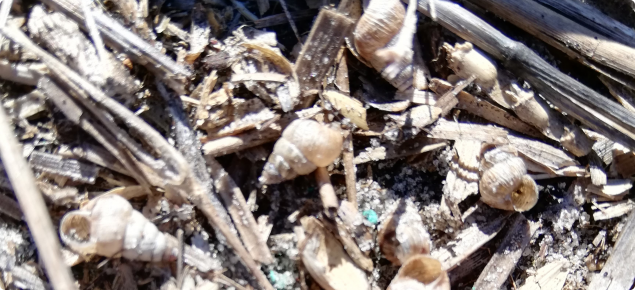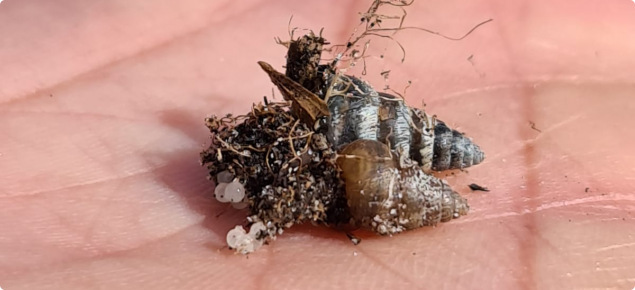Background
Baiting is the most common chemical control measure for snails in broad acre crops. Baits are usually applied in early autumn, before or at time of seeding when overnight temperatures are low and dew forms and snails start to become more active. To be effective, baiting should occur during conditions that increase bait interception by actively moving snails and before they lay eggs. Killing mature slugs and snails before autumn egg laying reduces the potential population build up for that season.
The variable nature of late summer to early autumn weather conditions, snails being active at night, and degradation of non-rain fast baits during rain events make the decision to bait difficult.
Aim
Snail movement, weather conditions, and snail reproduction was monitored over four years along the South Coast cropping regions of Western Australia to determine environmental conditions that initiate movement, feeding and formation of the albumen gland in small conical snails.
Methods
Monitoring sites were located at Condingup, Dalyup, and Woogenellup in 2017 and 2018; and Scaddan, Gibson, Dalyup, and Mount Barker in 2019 and 2020. At least 20 snails were collected from each site at least monthly and dissected to measure albumen gland length. The role of the albumen gland is to provide a nutritive secretion onto the fertilised egg so that egg laying can occur. Before snails lay eggs, the albumen gland starts to increase in size.
Snail movement was monitored using time-lapse cameras and scored 0 (no movement) - 3 (high activity) for every 15 minute block. Weather parameters were logged every 15 minutes. Rainfall data was from the nearest DPIRD weather station. Mean weather variables and snail activity as per cent time snail movement score was >0 were calculated from between 6pm and 6am daily.
Time baiting when relative humidity will be above 80% and air temperature below 20 degrees Celsius overnight
Snail movement was positively correlated with relative humidity and soil water content and negatively correlated to air and soil temperature (Table 1). Only February to 31 August data was included in these analyses as the strength of the correlation decreased after September, due to environmental and lifecycle factors influencing the snail population (e.g. presence of alternative habitats in the crop, death of larger mature snails). Snails were active when RH was >60% and air temperatures were below 20oC (Figure 2). Snail activity was observed 94% of nights when mean RH was above 90%. There was snail activity on 88% of nights with mean RH between 80-90%, and 53% of nights when mean RH was below 80%.
Over 95% of snail movement scores above 1 occurred when relative humidity was above 80%. This was 95% when a score of 3 was recorded (high snail activity), 94% when a score of 2 (moderate snail activity) was recorded, and 97% when a score of 1 (some snail activity) was recorded.
| Location | Start date | End date | RH | Air temp | Soil temp | Soil water content | Leaf wetness |
|---|---|---|---|---|---|---|---|
| ALL | 2019 | 2020 | 0.55 | -0.37 | -0.45 | 0.42 | 0.58 |
| Gibson | 18/03/19 | 31/08/19 | 0.63 | -0.37 | -0.40 | 0.25 | 0.59 |
| 04/02/20 | 02/07/20 | 0.43 | -0.40 | -0.39 | 0.60 | 0.54 | |
| Scaddan | 20/03/19 | 31/08/19 | 0.62 | -0.40 | -0.32 | 0.41 | 0.57 |
| 30/01/20 | 28/06/20 | 0.71 | -0.51 | -0.53 | 0.61 | 0.68 |
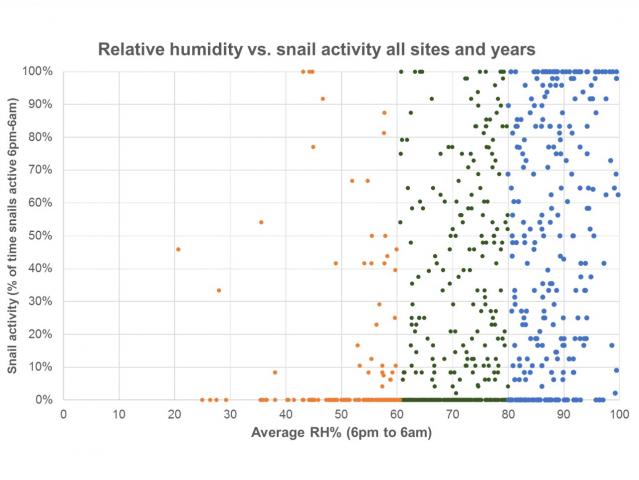
Snail baiting should occur from mid-March to April, before egg-lay
Mean albumen gland size of snail populations sampled at all sites across all years consistently reached their maximum by the first week of May (figure 1). Therefore, you should aim to bait by early-May. Summer rainfall influenced the start of gland size increase to be 2-4 weeks earlier. For example, increase in gland size of snails collected in the EPZ started from mid-March in 2018 after a wet summer, and mid-April in 2019 after a dry summer.
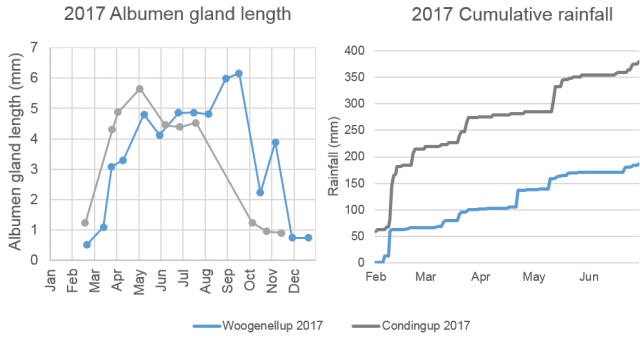
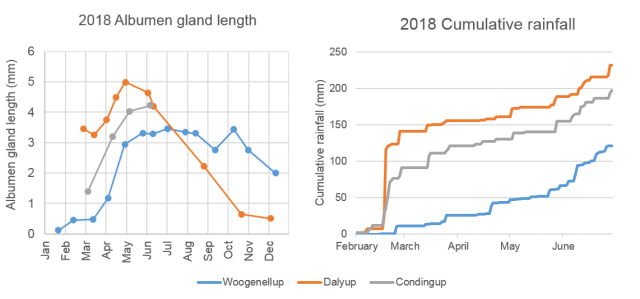
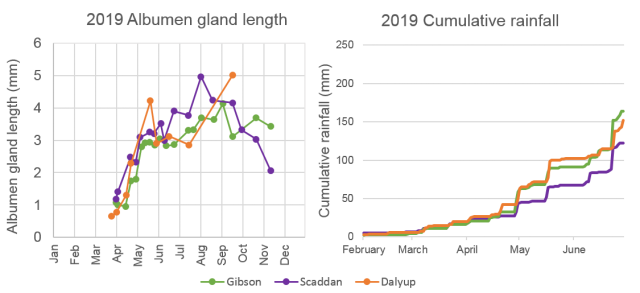
Awknowledgements
Project was only possible due to collaboration with Andrea Carmody (South East Premium Wheat Growers), Monica Field and Andrew Heinrich (Farm and General, Esperance), and Svetlana Micic and Sarah Belli (DPIRD Albany) and the growers who provided information and hosted timelapse cameras on their property.
This work was supported by DPIRD and GRDC within the 'Building crop protection and crop production agronomy research and development capacity in regional Western Australia' project DAW00256.

